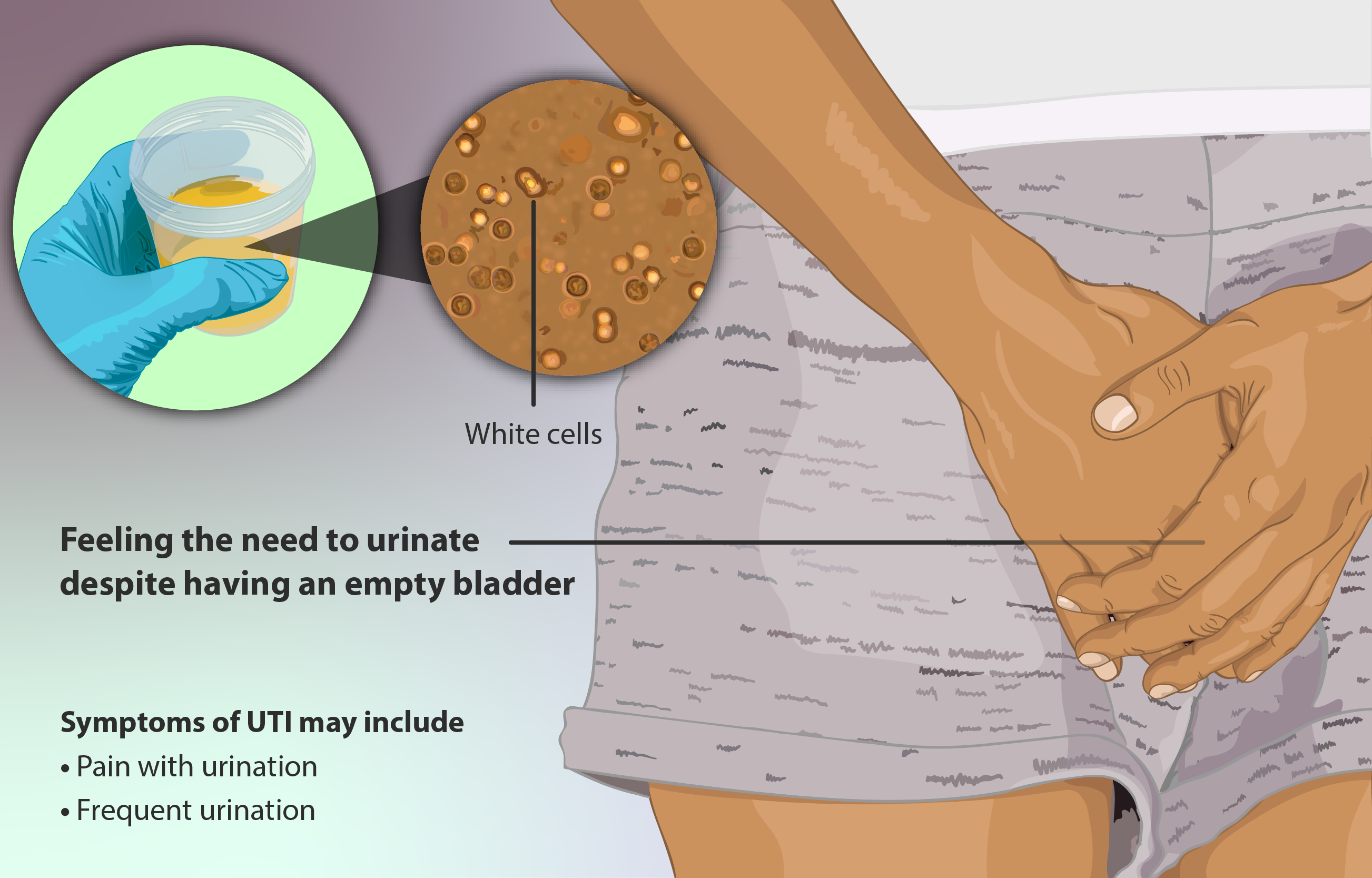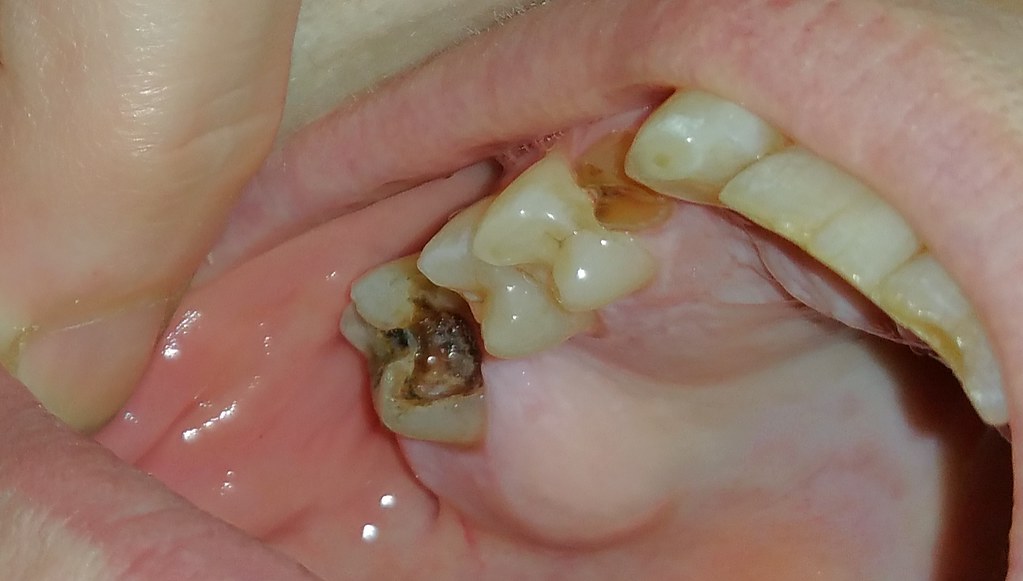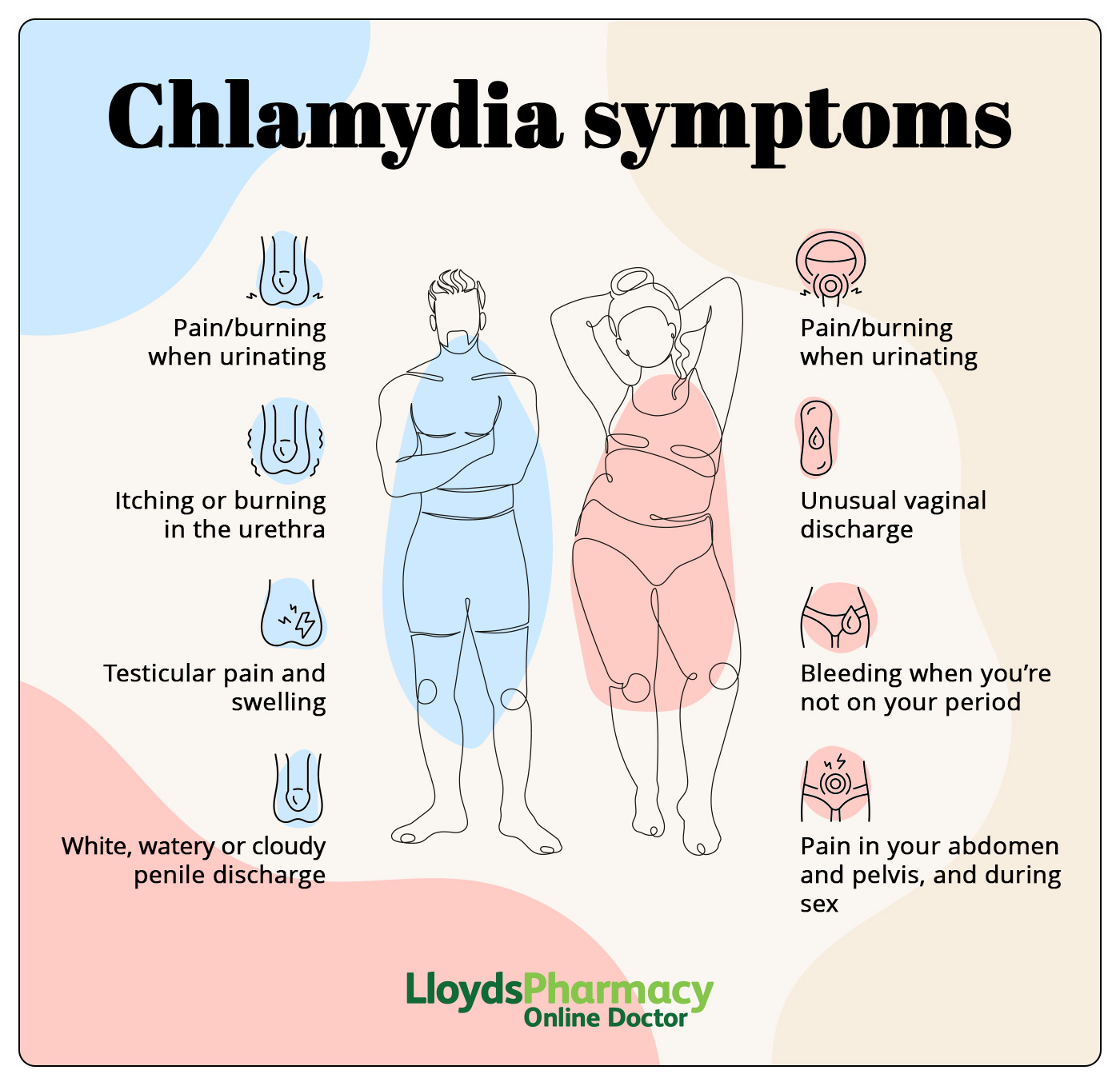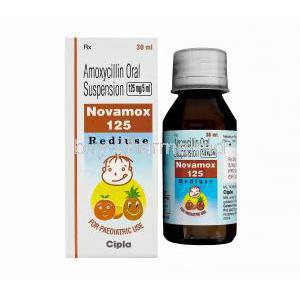Duet Dry Syrup, Amoxicillin/ Clavulanic Acid
- Introduction
- How it Works
- Composition
- Uses
- Treatment of Bacterial Infections
- Respiratory Tract Infections
- Urinary Tract Infections
- Skin and Soft Tissue Infections
- Bone and Joint Infections
- Community-Acquired Pneumonia (CAP)
- Bacterial Endocarditis Prophylaxis
- Amoxicillin for Dogs
- Amoxicillin for Cats
- Amoxicillin for Tooth Infection
- Amoxicillin for Ear Infection
- Off-label Uses
- Dosage and Administration
- Step-by-Step Guide for Preparing the Suspension
- Frequency and Duration of Administration
- Adjustments for Specific Populations
- Amoxicillin Dosage by Weight
- Amoxicillin Dose for Kids
- Amoxicillin Dosage for Strep Throat
- Amoxicillin Dosage for Tooth Infection
- Amoxicillin for Chlamydia
- Amoxicillin Dosage for Sinus Infection
- Amoxicillin Dosage for Dogs
- Clavulanic Acid Maximum Dose
- Side Effects
- Contraindications
- Important Precautions
- Interaction
- Administration to Specific Populations
- Overdosage
- Storage
- Handling Precautions
- Warnings
Introduction
Duet Dry Syrup is a blend crafted to treat a wide range of bacterial infections, with precision and care in mind. A vital player in antibiotic treatment methods it blends the strengths of Amoxicillin and Clavulanic Acid to produce healing results.The significance of this duo lies in their teamwork against strains.
As the battle against resistance rages on Duet Dry Syrup stands as an option with its proactive approach, in tackling this pressing concern. Its distinct characteristics and demonstrated effectiveness render it an essential option, for both patients and healthcare professionals.
- Effective, against a range of both gram-positive and gram-negative bacteria types.
- It is efficient, in addressing issues well as urinary tract infection and skin infections.
- Helps improve adherence because of its liquid form factor that's especially beneficial, for childrens usage.

Amoxicillin

Clavulanic Acid
How it Works
Mechanism of Action of Amoxicillin
Amoxicillin, a β-lactam antibiotic, targets the bacterial cell wall, inhibiting the synthesis of peptidoglycan. This action compromises the structural integrity of the bacterial wall, ultimately leading to cell lysis and death. Its activity spans a wide range of pathogens, making it a go-to choice for multiple infections.
Role of Clavulanic Acid in Overcoming Antibiotic Resistance
Clavulanic Acid functions, as a beta-lactamase inhibitor that counteracts enzymes created by bacteria to antibiotics. Endeavor reviving Amoxicillins effectiveness, against organisms that produce beta-lactamase enzymes to broaden its benefits.
Synergistic Effect of the Combination
The interaction of Amoxicillin and Clavulanic Acid leads to an effect that boosts their ability to kill bacteria effectively.
Composition
Active Ingredients: Amoxicillin and Clavulanic Acid
The ingredients, in Duet Dry Syrup consist of;
- Amoxicillin is a type of penicillin that can be taken orally and is known for its ability to be absorbed by the body.
- Clavulanic acid is an inhibitor of β lactamase that enhances the effectiveness of amoxicillin.
Inactive Ingredients and Their Role
The components, in Duet Dry Syrup that are not actively involved contribute to its ability to remain stable and easy to consume and absorb by the body. These substances consist of items like flavor enhancers, suspending agents, and preservatives that help improve adherence and are especially beneficial, for children.
Available Strengths and Formulations
Duet Dry Syrup comes in strengths to meet the requirements of each patient. Each 1 teaspoon of the mixture contains Amoxicillin at a dose of 200 milligrams and Clavulanic Acid at a dose of 28,500 micrograms. The liquid medicine contains Amoxicillin at a concentration of 400 mg and Clavulanic Acid, at 57 mg, per 5 ml.
Comparative Insights
Exploring how Duet Dry Syrup compares to antibiotics offers perspectives.
- Amoxicillin potassium clavulanate boosts its effectiveness, against strains when compared to using amoxicillin on its own.
- Amoxicillin and Ibuprofen are used differently. Amoxicillin treats infections while Ibuprofen handles inflammation or pain that comes with it.
- Augmentin and Amoxicillin are quite similar, in composition as Augmentin comprises the ingredients found in Duet Dry Syrup with similar effectiveness and range of uses.
- When choosing between Amoxicillin and Penicillin it's worth noting that Amoxicillin provides a range of effectiveness and is easily absorbed when taken orally compared to Penicillin.
- When it comes to Azithromycin, versus Amoxicillin comparison, Azithromycin is often chosen for treating infections. Amoxicillin works well against common bacterial pathogens.
- When deciding between Cephalexin and Amoxicillin for treatment purposes it is important to consider patient factors such, as tolerance levels and resistance patterns since both medications target pathogens with slight variations in their effects due to being, from the same family of antibiotics known as cephalosporins.
Uses
Treatment of Bacterial Infections
Amoxicillin is a respected antibiotic that's crucial, for treating different bacterial infections effectively due to its wide-ranging effectiveness against various pathogens, in a variety of healthcare settings.
Respiratory Tract Infections
Amoxicillin is commonly used as the first-line treatment, for respiratory tract infections that prevalent globally and affect many people worldwide by effectively targeting the bacterial pathogens causing these illnesses.

Amoxicillin for Pneumonia
Community-acquired pneumonia is an illness that is often managed using amoxicillin, due, to how it blocks the synthesis of bacterial cell walls and promotes a quick and dependable recovery process.

Amoxicillin for Bronchitis
When dealing with bronchitis situations amoxicillin works to get rid of the bacteria causing the illness easing symptoms, like cough and breathing troubles. Patients are more likely to stick to their treatment plan due, to how well they can tolerate the medication.

Urinary Tract Infections
Amoxicillin is often recommended for treating urinary tract infections (UTIs) in less severe situations where no complications are present. It works by eliminating bacteria that cause UTIs, like Escherichia coli. Helps prevent more serious issues such, as kidney infections or recurring infections.

Skin and Soft Tissue Infections
Amoxicillin is known for its effectiveness, in treating skin and soft tissue infections, like cellulitis and abscesses by targeting the gram bacteria often associated with these conditions.
Bone and Joint Infections
Infections affecting bones and joints, like osteomyelitis and septic arthritis require treatment to combat them effectively. Amoxicillin is commonly used along, with medications to reach bone tissue and stop bacterial growth to help with the healing process.

Community-Acquired Pneumonia (CAP)
Pneumonia is an illness that causes a lot of sicknesses and amoxicillin is still a part of treating it effectively because it works well against common bacteria, like Streptococcus pneumonia which helps in achieving good treatment results.
Bacterial Endocarditis Prophylaxis
Individuals facing the risk of bacterial endocarditis prophylaxis during procedures benefit from taking amoxicillin as a preventive measure to safeguard their health. Especially crucial, for patients with underlying heart conditions that make them more susceptible, to this infection.

Amoxicillin for Dogs
In the field of care, for dogs amoxicillin is commonly prescribed for combating infections. It is effective in treating a variety of conditions such, as skin infections and respiratory issues promoting the health and happiness of pets.
Amoxicillin for Cats
Feline bacterial ailments, like abscesses or respiratory infections typically show outcomes with the use of amoxicillin due, to its proven safety and efficacy profile that garners trust among both veterinarians and pet guardians.
Amoxicillin for Tooth Infection
To treat tooth infections that come with pain and swelling effectively; amoxicillin is used as it fights the bacteria causing the infection to stop its spread and help in recovering health.

Amoxicillin for Ear Infection
Ear infections are quite common, in kids. Amoxicillin helps alleviate symptoms by attacking the bacteria causing inflammation and infection, in the middle ear.

Off-label Uses
Dental Infections
Amoxicillin is well known for its approved uses by the FDA; however its use, for issues that are not officially approved has caught the interest of healthcare providers lately. Dentists often find success in treating abscesses, periapical infections, and post-extraction issues, with amoxicillin. This antibiotic works by fighting anaerobic and facultative anaerobic bacteria to reduce pain and swelling caused by growth.
Highly efficient, in combating Streptococcus viridans which is a found oral pathogen. Stops the transmission of infections. It helps speed up the healing process when combined with treatments, like root canals or surgical drainage procedures. Amoxicillins ability to effectively reach infected tissues and its established safety record make it a popular option when addressing the connection, between health and overall well-being.
Prophylaxis for Surgical Infections
Amoxicillin is used off-label to prevent postoperative infections, in surgical settings with a high risk of bacterial contamination like gastrointestinal and gynecological procedures or maxillofacial surgeries; it provides reliable protection, against infections.
Given before surgery to reduce the growth of bacteria, around incision areas. Reduces the occurrence of infections, at the site improving results after surgery. Commonly paired with antibiotics to provide coverage during intricate surgical procedures.
Amoxicillins diverse use, beyond its approved indications highlights its effectiveness in world settings as a preventive measure showcasing the antibiotic's dual role, in treating infections and protecting patients from potential complications caused by harmful microbes.

Dosage and Administration
Step-by-Step Guide for Preparing the Suspension
Adequate preparation of the amoxicillin liquid is crucial to guarantee dosing and effectiveness, in treatment outcomes.
- Make sure to shake the bottle to loosen up the powder before you start mixing it in.
- Please gradually pour the amount of previously boiled water into the mixture, in small portions.
- Make sure to screw the cap on and give it a shake until everything is mixed evenly.
- Remember to keep the suspension chilled if advised and give it a shake before every use.
By following these guidelines and consistently following the outlined steps ensures that the suspension retains its effectiveness, in delivering doses for successful treatment.
Frequency and Duration of Administration
The Timing of taking amoxicillin vary based on how serious the infection is and what kind it is.
- People usually take medication two to three times a day at intervals throughout the day.
- The duration of the course varies from 5 to 14 days to ensure that the infection is completely eliminated.
- It's recommended for patients to finish the treatment regimen to avoid resistance development even if they start feeling sooner than expected.
Adjustments for Specific Populations
Renal Impairment
Individuals, with impaired kidney function must adjust the dosage to avoid the buildup of drugs, in the body and prevent any toxicity.
Adjust the frequency. Amount depending on the levels of creatinine clearance. In cases of decline, in health it might be necessary to space out the medication doses to every 12 to 24 hours. Seeking guidance from a professional is crucial, for treatment plans.
Hepatic Impairment
Patients, with liver problems should have their liver enzyme levels closely watched.
- Typically the regular dosage remains unchanged unless there is impairment.
- When someone has liver damage it is helpful to check their kidneys to decide on the right dosage of medication to use.

Amoxicillin Dosage by Weight
Dosing based on weight is especially important when treating children. The typical dose, for children is between 20 to 50 milligrams per kilogram per day. Should be taken in 2, to 4 doses throughout the day. During infections medical oversight may necessitate adjusting dosage levels.
Amoxicillin Dose for Kids
Proper dosing, for children should be based on their weight and age. Suspensions provide versatility in ensuring measurements of doses. Remember to utilize calibrated measuring instruments when carrying out any administration tasks.
Amoxicillin Dosage for Strep Throat
The typical amount recommended for addressing pharyngitis in both adults and children is;
- For adults the recommended dosage is 500 twice a day or 250 mg three times a day, for a period of 10 days.
- For kids aged 2 to 12 years old weighing, between 40 to 50 kilograms, per day should take the medicine daily for a duration of 10 days.

Amoxicillin Dosage for Tooth Infection
Swift action is essential when dealing with tooth infections to avoid any complications.
- For adults take 500 milligrams every 8 hours or 875 milligrams every 12 hours.
- The typical length of a course usually ranges from 5, to 1 week.
Amoxicillin for Chlamydia
Although it's not commonly the choice, for chlamydia treatment in cases. Sometimes amoxicillin is prescribed for individuals, with chlamydia.
- Take 500 milligrams by mouth three times a day for a week.
- Confirmation of effectiveness is needed through testing after the treatment has been administered.

Amoxicillin Dosage for Sinus Infection
Sinus infections typically show improvement, with the use of amoxicillin.
- For grown ups take 500 to 875 mg every 12 hours for a period of 10 to 14 days.
- Children should take, between 45 to 90 milligrams per kilogram, per day. Split it into two doses.
Amoxicillin Dosage for Dogs
Amoxicillin is a medication often recommended by veterinarians, for animal healthcare.
- Typical dosage usually ranges from 1 to 2 grams, per kilogram taken twice a day.
- Specific formulations are created to guarantee dosing for animals.
Clavulanic Acid Maximum Dose
Clavulanic acid is often given with amoxicillin to boost its efficacy. For the most part cases of infection severity 125, to 200 mg, per dose is the recommended maximum daily dose limit. Taking more than the advised amount could cause stomach issues. Ensuring the dosage of both amoxicillin and clavulanic acid is crucial, for achieving treatment outcomes and reducing the chances of negative side effects.
Side Effects
Overview of Potential Side Effects
Amoxicillin and its combination, with clavulanic acid are known for their effectiveness in treating infections; however they can cause side effects in individuals. These negative reactions vary from discomfort to serious responses so it's important to monitor them closely and address them promptly. Being aware of the side effects is crucial for safeguarding patient well-being and compliance, with treatment protocols.
Common Side Effects
Nausea
Feeling nausea is commonly mentioned as a side effect of taking amoxicillin for some people who use it often right after they take it but having something to eat with the medication might help ease the discomfort usually it goes away on its own without needing any treatment, in situations

Diarrhea
Diarrhea is a stomach related side effect that occurs when antibiotic use disrupts the balance of gut bacteria, in the body. Taking in plenty of fluids and probiotics can be helpful in managing this problem. If diarrhea is severe or lasts along time it could be a sign of a serious health issue, like Clostridioides difficile infection and prompt medical assistance may be necessary.
Skin Rash
Sometimes when kids take amoxicillin they might get a skin rash that looks pink or red, on their skin for a bit but usually goes away without needing any treatment in a few days. It's important to be able to tell if it's a regular rash or an allergic reaction.

Allergic Reaction to Amoxicillin
When someone has a reaction, to amoxicillin like developing hives or experiencing swelling or trouble breathing it's important to stop taking the medication and seek advice from a healthcare professional away. In serious situations, like anaphylaxis where urgent medical attention is crucial.
Amoxicillin and Clavulanate Side Effects in Adults
When adults take both amoxicillin and clavulanate at the same time it can cause side effects, like stomach pain or feeling dizzy sometimes but these effects are usually not serious; however it is important to keep an eye out for them especially in patients, with existing health issues or sensitivities.
Amoxicillin Rash
Children, with infections, like the Epstein Barr virus commonly develop a rash linked to amoxicillin use that can be confused with an allergy. Usually goes away on its own and doesn't prevent the medicines future usage.

Amoxicillin Rash Treatment
How to handle an amoxicillin rash revolves around easing symptoms, which involves methods;
- Using calming creams or lotions to ease the discomfort of skin itchiness.
- Managing discomfort, through the use of antihistamines.
- If the rash continues or gets worse it's best to see a doctor for advice and treatment.
Rare but Serious Side Effects
Anaphylaxis
Anaphylaxis is an reaction that can be life-threatening and is not common, with amoxicillin use. Symptoms may include swelling, difficulty breathing, fast heart rate, and loss of consciousness. It's crucial to act by giving epinephrine and seeking medical attention to avoid tragic consequences.

Hepatic Dysfunction
Liver problems caused by amoxicillin clavulanate are rare but possible. May show signs such, as skin discoloration (jaundice) dark urine coloration, and stomach discomfort. Prior liver issues increase the likelihood of complications; therefore close supervision is advised during treatment.
Severe cases call for drug discontinuation and supportive measures to be taken. Understanding the range of effects allows healthcare professionals and individuals to collaborate in effectively addressing them to ensure that the advantages of treatment surpass any associated risks.
Contraindications
Absolute Contraindications
Amoxicillin and its combination, with clavulanic acid should not be used in situations due, to health risks they may pose. Individuals who have previously shown a sensitivity, to penicillins or cepahalosporins should be cautious due, to the risk of experiencing allergic responses. A previous experience of jaundice or liver issues linked to the utilization of amoxicillin/clavulanic acid. In cases of kidney damage where adjusting the dosage's not feasible.
Relative Contraindications Requiring Medical Discretion
Under circumstances or situations where caution is warranted. Use of amoxicillin and clavulanic acid requires consideration.
- Patients who have had mononucleosis in the past are, at a risk of experiencing a rash that is not caused by allergies.
- Individual, with liver issues should have their liver function monitored regularly to stay on top of things and take care of their health properly.
- Simultaneous use, with medications that affect kidney excretion may necessitate dosage modifications.
Amoxicillin/Clavulanic Acid Warnings
It is important to be cautious when using this medication in people who may have allergies or have had reactions, to antibiotics in the past especially in children and elderly patients who need close monitoring to reduce potential risks.
Important Precautions
Monitoring for Allergic Reactions
Patients can experience reactions to amoxicillin ranging from skin irritations to severe anaphylactic shock which can be life-threatening, in nature. The importance of educating patients about the signs, like itching or swelling that may indicate an allergic reaction cannot be overstated. It's crucial to stop taking the medication and seek medical help when such symptoms occur.
Avoiding Unnecessary Use to Prevent Resistance
Excessive and incorrect use of antibiotics play a part, in the issue of resistance highlighting the importance of only recommending amoxicillin when bacterial infections are definitively diagnosed or strongly expected a practice that safeguards the drugs effectiveness, for future use.
Impact on Gut Microbiota
Taking amoxicillin and other antibiotics can throw off the balance of bacteria in your gut. Cause stomach issues, like diarrhea. Adding probiotics while you're, on antibiotics could keep your gut bacteria diverse. Lessen any effects.

Amoxicillin Allergy
Patients with a history of amoxicillin allergy should avoid the drug entirely. Alternatives such as macrolides or fluoroquinolones may be considered, depending on the infection type and severity.
Delayed Allergic Reaction to Amoxicillin
Adverse reactions that occur after a delay following the start of treatment may include symptoms resembling serum sickness or maculopapular rashes. Require assessment to distinguish between allergic and non-allergic causes.
Interaction
Interaction with Other Antibiotics
Amoxicillin can Work together effectively Counteract the effects of other antibiotics. When used together with aminoglycosides synergistic effects can be observed in the treatment of infections. Antagonism may arise when combined with agents such, as tetracyclines.
Effect on Oral Contraceptives
Amoxicillin might make birth control pills less effective by changing the bacteria in the gut that affects how the body absorbs estrogen. Women are recommended to consider using birth control methods while taking antibiotics and for a period afterward.
Interaction with Anticoagulants and Blood Thinners
When amoxicillin is taken together with anticoaugulants, like warfarin it might lead to a time that could potentially cause bleeding issues so it's important to regularly check coaguIation levels to avoid any complications.

Interaction with Dietary Components
Amoxicillin absorption might be slightly affected by food; however, it is commonly advised to consume the medication, with meals to alleviate discomforts. Having high-fat meals does not notably affect how well the drug is absorbed into the body.
Amoxicillin and Birth Control
Women who are taking birth control should be made aware of the decrease, in contraceptive effectiveness that could occur during antibiotic use. It is advisable to use barrier methods, like condoms as a safety measure while undergoing antibiotic treatment.
Amoxicillin and Alcohol
Drinking alcohol while taking amoxicillin doesn't affect how well it works directly but can make side effects, like nausea and dizziness worse and upset the stomach more. It's an idea to cut back on alcohol during treatment to lessen the chances of experiencing unwanted effects.
Administration to Specific Populations
Administration to Elderly
When giving patients amoxicillin it's important to take into account the changes, in their body functions that come with age like how their kidneys work efficiently and their liver processes medications differently affecting how the drug behaves in their system and requiring adjustments, in dosage to avoid harmful build-up and side effects.
- It's important to check the health of your kidneys by keeping an eye on factors, like creatinine clearance.
- It's best to begin with the dosage to reduce the chances of negative side effects occurring.
- Regular evaluations aid, in reducing issues like stomach problems or additional infections.
Creating care plans improves the safety and effectiveness of treatment, for older individuals.

Administration to Pregnant Women and Nursing Mothers
Safety Profile During Pregnancy
Amoxicillin falls under category B for pregnancy classification which means there is no evidence of harm, to the fetus in animal studies far observed. It is commonly recommended during pregnancy to treat infections like tract infections as quick treatment is crucial, in preventing complications. It's considered safe to use at any point during pregnancy as its recommended by a healthcare professional. Adjustments, to the medication dosage might be needed to consider changes, in how the body processes drugs during pregnancy.
Excretion in Breast Milk and Precautions for Nursing Mothers
Amoxicillin is released into breast milk in amounts and is usually deemed safe for nursing babies; however it's advised to watch out for any side effects, like diarrhea or candidiasis, in the baby. Make sure to have a chat, with a healthcare, about the advantages and disadvantages of breastfeeding. Remember to inform a healthcare provider if you notice any signs, in the baby.
Administration to Children
Age-Specific Dosage Recommendations
Amoxicillin is commonly prescribed for children because of its effectiveness and safety record with doses customized according to the child's age and weight to achieve levels. For newborns and young babies, under three months old the recommended dosage is 20 to 30 milligrams per kilogram, per day divided into doses throughout the day. For children, than three months old; the recommended dosage ranges from 25 to 50 milligrams per kilogram, per day; higher doses may be required for infections.
Safety Profile in Pediatric Populations
The safety record, in children is widely recognized; however it's crucial to monitor for any impacts like stomach discomfort or allergic reactions. The use of forms makes it easier to administer and ensures adherence, among younger patients.
Careful Administration
Special Precautions for Individuals With a History of Penicillin Allergies
People who have a known penicillin allergy need to be evaluated before starting treatment, with amoxicillin to ensure safety measures are in place and to consider the possibility of cross reactivity, with cephalosporins. Perform an evaluation of the patients allergy history to determine risks. Please conduct a skin test or administer under the supervision of a professional if needed.
Monitoring in Patients With Hepatic or Renal Disorders
Patients with hepatic or renal dysfunction require tailored dosing to minimize the risk of drug accumulation and toxicity. Routine monitoring of liver enzymes and renal parameters is crucial for these individuals.
- Renal impairment: Adjust dosage based on creatinine clearance.
- Hepatic dysfunction: Monitor liver function tests and avoid co-administration with hepatotoxic drugs.

Overdosage
Symptoms of Overdosage
Taking much amoxicillin can cause digestive issues, like nausea, vomiting, and diarrhea to show up in the body. In situations of kidney problems, crystals in the urine, or disturbances in the nervous system, like seizures might be experienced.
Immediate Steps to Take in Case of Accidental Overdosage
In case of an overdose situation arises it's crucial to seek medical assistance. Important steps to take include ; Reaching out to a poison control center or healthcare professional. Cease the medication away. Encouraging people to drink water to help the kidneys clear out the medication.
Treatment and Management Options
Treating an overdose of amoxicillin mainly involves providing care to the individual affected by it. If the ingestion occurred recently or is recent, in nature it may be appropriate to give activated charcoal. For individuals, with kidney problems hemodialysis can help in removing the drug from their system. Keep an eye, on the patients signs and kidney function at all times. In situations, with impacts think about admitting the patient, to the hospital. Ensuring intervention and careful monitoring are key, to maximizing the recovery outcome in instances of overdose.
Storage
Ideal Storage Conditions for the Syrup
To keep the syrup effective and stable, over time it's crucial to follow the storage instructions. Store the syrup in an dry spot away, from sunlight and moisture. Keeping it within a temperature range of 15°C to 25°C will help preserve its potency until you mix it up again. Remember to store the medication in its packaging to shield it from conditions. Please keep the product in a place where children cannot reach it to avoid swallowing.
Stability After Reconstitution
Once you mix the syrup, with water. Chill it properly in the fridge, between 2°C and 8°C as instructed by the manufacturers guidelines to maintain its stability for about 7 to 10 days before disposing of it.
- It's best not to freeze the reconstituted syrup since it could affect how well it works.
- Remember to give the bottle a shake before using it to make sure the active ingredients are evenly spread out.
Disposal Guidelines for Unused Medicine
Make sure to dispose of any syrup that you haven't used or that has expired to prevent any chance of misuse or harm, to the environment. Follow the disposal guidelines, in your area. Avoid pouring the medicine down the drain or flushing it unless you have instructions to do so. Reach out to your pharmacy to inquire about take back initiatives or guidance, on disposal methods. Combine any leftover medication, with something, like used coffee grounds. Store it in a sealed bag before disposing of it in the regular household garbage.
Handling Precautions
Guidelines for Reconstituting the Dry Syrup
Ensuring the syrup is properly mixed is essential to get the dosage and desired medicinal outcome so be sure to adhere to the instructions provided in the leaflet or as advised by a healthcare provider. Gently shake the bottle to loosen the powder before pouring in the water. Slowly pour. Cooled water, into the bottle until it reaches the designated line. Make sure to shake it to ensure that everything is mixed evenly.
Ensuring Proper Measurement and Administration
Precise measurement and proper administration are crucial to avoid giving too much medication. Make sure to use the measuring cup or syringe provided for dosing. It's best to steer of using spoons from your kitchen since they might result in inaccurate measurements. Remember to give the medicine at intervals to keep the amount in your system for treatment purposes.
Safe Handling and Hygiene Practices
Handling medications safely helps reduce the chances of contamination and maintains the effectiveness of the medication. Remember to wash your hands both before and, after dealing with the syrup. Remember to seal the bottle cap when you're not using it to avoid any microbial contamination issues. Remember to clean and dry the measuring device after every use.
Warnings
Risks of Prolonged Use
Extended usage of antibiotics, like syrup might result in impacts such as increased growth or changes in the balance of gut bacteria. Henceforth it is crucial to undergo treatment, under careful medical monitoring. Look out for any indications of infections, like mouth sores or stomach issues. It's important not, to prolong treatments, than necessary to avoid potential long-term issues.
Risks Associated with Incomplete Treatment Courses
Stopping treatment soon can lead to the elimination of the bacterial infection, which can cause a recurrence or the emergence of resistant strains. Continue taking the recommended course of treatment even if you start feeling better on. Please get in touch with your healthcare provider if you encounter any side effects that could make it difficult to stick to the treatment plan.
Potential for Developing Antibiotic Resistance
Using antibiotics incorrectly is a factor, in the issue of antibiotic resistance. Misusing antibiotics can involve not taking all doses as prescribed by a doctor or using them excessively without consulting a healthcare provider. Remember to follow the instructions given by a healthcare professional when using antibiotics.
Make sure you understand how crucial it is to follow the recommended routine to fight against resistance. By adhering to these instructions carefully and the suggestions given above in the text provided by you here on individuals can make the most of the healing advantages offered by the syrup while also reducing dangers and promoting the prudent use of antibiotics responsibly.
Duet Dry Syrup, Amoxicillin/ Clavulanic Acid FAQ
- Does Amoxicillin treat UTI?
- Does Amoxicillin make you tired?
- Can Amoxicillin treat UTI?
- Can you take Tylenol with Amoxicillin?
- How long does Amoxicillin take to work?
- Does Amoxicillin treat strep?
- Does Amoxicillin cause diarrhea?
- How long does Amoxicillin stay in your system?
- Can you take Amoxicillin on an empty stomach?
- How long is Amoxicillin good for?
- Can you drink alcohol with Amoxicillin?
- Is Amoxicillin the same as Penicillin?
- What does Amoxicillin and Clavunate treat?
- How long does it take Amoxicillin to work?
- Can you take Ibuprofen with Amoxicillin?
- Can dogs take Amoxicillin?
- Can you take Amoxicillin while pregnant?
- Is Augmentin the same as Amoxicillin?
- How long does Amoxicillin last?
- How long for Amoxicillin to work?
- How fast does Amoxicillin work?
- Is Amoxicillin safe during pregnancy?
- Can Amoxicillin cause UTI?
- Can I take Ibuprofen with Amoxicillin?
- Will Amoxicillin treat a UTI?
- Can Amoxicillin make you tired?
- Is Amoxicillin good for UTI?
- Can Amoxicillin cause diarrhea?
- Can Amoxicillin cause yeast infection?
- Can you drink alcohol on Amoxicillin?
- Can I take Tylenol with Amoxicillin?
- How long does it take for strep throat to go away with Amoxicillin?
- Can you drink alcohol with Amoxicillin?
- Is Amoxicillin good for sinus infection?
- Can you take Amoxicillin with Tylenol?
- How long is strep contagious after Amoxicillin?
- How much Amoxicillin for a dog?
- How long after taking Amoxicillin can you drink alcohol?
- Does Amoxicillin need to be refrigerated?
- Can you take Nyquil with Amoxicillin?
- Can Amoxicillin cause a rash?
- Can I take Amoxicillin on an empty stomach?
- Can Amoxicillin treat BV?
- Does Amoxicillin affect birth control?
- How long to take Amoxicillin for sinus infection?
- Can Amoxicillin treat trichomoniasis?
- Can Amoxicillin treat chlamydia?
- What happens if I accidentally take a double dose of Amoxicillin?
- Can I take Nyquil with Amoxicillin?
- Can I take Amoxicillin while pregnant?
- How quickly does Amoxicillin work?
- Does Amoxicillin treat pneumonia?
- What is Clavulanic Acid?
- Can Clavulanic Acid cause acid reflux?
- Can Clavulanic Acid be given in pregnancy?
- Can Clavulanic Acid cause gout?
- Can Amoxicillin Clavulanic Acid treat chlamydia?
- Can Amoxicillin Clavulanic Acid treat Gonorrhoea?
- Can Amoxicillin Clavulanic Acid be crushed?
- How Clavulanic Acid works?
- How Amoxicillin Clavulanic Acid works?
- How is Clavulanic Acid made?
- How to take Amoxicillin Clavulanic Acid ?
- How does Clavulanic Acid work?
- How does Clavulanic Acid protect Amoxicillin?
- What does Clavulanic Acid do?
- What is Clavulanic Acid used for?
- What is Clavulanic Acid 125mg?
- What does Clavulanic Acid do when added to Amoxicillin?
- What does Clavulanic Acid do with Amoxicillin?
- What is Clavulanic Acid and how does it work?
- What is Clavulanic Acid prescribed for?
- What is Clavulanic Acid mechanism of action?
- What is Clavulanic Acid quizlet?
- What is Amoxicillin Clavulanic Acid?
- What does Clavulanic Acid do in Augmentin?
- When should Clavulanic Acid be taken?
- When to use Clavulanic Acid?
- Are Amoxicillin and Penicillin the same?
- Are AMOXICILLIN and AUGMENTIN the same?
- Are Amoxicillin and Penicillin the same thing?
- Are Amoxicillin and Ampicillin the same?
- Are Amoxicillin and Azithromycin the same?
- Are Amoxicillin and Cephalexin the same?
- Are Amoxicillin and Ciprofloxacin the same?
- Are Amoxicillin and Doxycycline the same?
- Are Amoxicillin and Rocephin in the same family?
- Are Amoxicillin and Augmentin the same thing?
- Are Amoxicillin and Azithromycin in the same family?
- Are Amoxicillin and Cloxacillin the same?
- Is Amoxicillin suitable for vegetarians?
- Are Amoxicillin and Cefazolin related?
- Are Amoxicillin and Penicillin related?
- Can Amoxicillin treat UTI?
- Can Amoxicillin treat cough?
- Can Amoxicillin be taken without food?
- Can Amoxicillin treat chlamydia?
- Can Amoxicillin be taken with Paracetamol?
- Can Amoxicillin cause diarrhea?
- Can Amoxicillin make you tired?
- Can Amoxicillin treat fever?
- Can Amoxicillin treat acne?
- Can Amoxicillin treat diarrhea?
- Can Amoxicillin treat STD in males?
- Can Amoxicillin and Ceftriaxone be taken together?
- Can Amoxicillin delay your period?
- Can Amoxicillin cause dark stools?
- Can Amoxicillin cause UTI?
Does Amoxicillin treat UTI?
Amoxicillin is effective, in addressing tract infections (UTIs) though it is usually considered as a secondary option when other antibiotics are not suitable for the situation, at hand.
Does Amoxicillin make you tired?
Feeling tired is not typically associated with taking Amoxicillin; however some people might experience fatigue due, to their infection, than the medication itself.
Can Amoxicillin treat UTI?
Amoxicillin has the potential to effectively treat UTIs when the bacteria responsible, for the infection are responsive, to it; howevers else antibiotics are usually the choice.
Can you take Tylenol with Amoxicillin?
You can definitely pair TYLENOL (acetaminophen ) with Amoxicillin to help alleviate symptoms such, as fever or pain.
How long does Amoxicillin take to work?
Amoxicillin usually starts to take effect within 24 to 72 hours; however it may take longer for symptoms to fully improve based on the seriousness of the infection.
Does Amoxicillin treat strep?
Amoxicillin is frequently prescribed to treat infections like strept throat.
Does Amoxicillin cause diarrhea?
Diarrhea is a side effect of taking Amoxicillin because it affects the balance of bacteria, in the system.
How long does Amoxicillin stay in your system?
Amoxicillin typically exits the system, between 8 to 12 hours following the dose. This timeframe can differ based on kidney health.
Can you take Amoxicillin on an empty stomach?
You can take Amoxicillin with or, without food; however having it with food might help ease any stomach discomfort you may experience.
How long is Amoxicillin good for?
Amoxicillin in liquid form is good for 7-14 days refrigerated and tablets retain their potency until the expiration date
Can you drink alcohol with Amoxicillin?
Consuming alcohol, alongside Amoxicillin does not have an interaction; however it could potentially hinder the recovery process by compromising the system or exacerbating side effects such, as stomach discomfort.
Is Amoxicillin the same as Penicillin?
Amoxicillin and PENICILLIN are not the type of antibiotics; however they are both part of the beta lactam family. Have some similar applications.
What does Amoxicillin and Clavunate treat?
Amoxicillin and CLAVULANIC ACID are commonly used to address infections such, as sinusitis and respiratory or skin infections by combatting antibiotic resistance.
How long does it take Amoxicillin to work?
Amoxicillin typically starts to show results in 1 to 2 days; however the speed of recovery varies depending on the infections type and severity.
Can you take Ibuprofen with Amoxicillin?
It's safe to take IBUPROFEN along, with Amoxicillin to help alleviate pain or reduce fever.
Can dogs take Amoxicillin?
Amoxicillin is often recommended for dogs to address infections; however it should be administered under the guidance of a veterinarian.
Can you take Amoxicillin while pregnant?
Its commonly accepted that Amoxicillin is safe, for individuals when recommended by a healthcare professional.
Is Augmentin the same as Amoxicillin?
AUGMENTIN isn't Amoxicillin—it also includes CLAVULANTE to boost its ability to fight bacteria that are resistant, to other treatments.
How long does Amoxicillin last?
Usually after a days of taking Amoxicillin you should start feeling better from the infection you have; however it's important to take the medication, for the prescribed period which typically ranges from 7 to 10 days for it to work effectively.
How long for Amoxicillin to work?
Amoxicillin typically begins to take effect within 1 to 3 days. Full recovery may require time.
How fast does Amoxicillin work?
Amoxicillin starts working against bacteria after the dose and usually shows noticeable improvement within 1 to 2 days.
Is Amoxicillin safe during pregnancy?
Amoxicillin is generally regarded as safe for the majority of women when recommended by a healthcare provider.
Can Amoxicillin cause UTI?
Amoxicillin doesn't lead to UTIs. It's actually an antibiotic prescribed to address them.
Can I take Ibuprofen with Amoxicillin?
Yes! It's usually fine to use IBUPROFEN with Amoxicillin for easing pain or reducing fever.
Will Amoxicillin treat a UTI?
Amoxicillin might work for a UTIs if the bacteria causing the infection respond to it well; however its not typically the choice when it comes to antibiotics, for this type of infection.
Can Amoxicillin make you tired?
Feeling tired is not typically associated with taking Amoxicillin; however some individuals might experience fatigue due, to their existing infection, than the medication itself.
Is Amoxicillin good for UTI?
Amoxicillin may work well in dealing with UTIs caused by bacteria that're susceptible, to it; however it is not typically the initial choice of treatment, in many situations.
Can Amoxicillin cause diarrhea?
Here's the paraphrased text; Indeed! Diarrhea often occurs as a side effect of taking Amoxicillin because of its effects, on the bacteria, in the gut.
Can Amoxicillin cause yeast infection?
Amoxicillin has the potential to cause yeast infections as it can upset the balance of bacteria and fungi, in the body.
Can you drink alcohol on Amoxicillin?
Its recommended to steer clear of alcohol when taking Amoxicillin as it may slow down your recovery process and amplify side effects such, as stomach upset even though alcohol doesn't directly interact with the medication.
Can I take Tylenol with Amoxicillin?
It's perfectly fine to take TYLENOL (acetaminophen), along, with AMOXICILLIN to help with fever or pain.
How long does it take for strep throat to go away with Amoxicillin?
Symptoms of strep throat typically get better within 24, to 48 hours after beginning a course of Amoxicillin ; however it's important to complete the treatment to fully clear the infection.
Can you drink alcohol with Amoxicillin?
No it is not recommended to take alcohol with Amoxicillin
Is Amoxicillin good for sinus infection?
Amoxicillin is a prescribed medication, for treating sinus infections and shows effectiveness in cases where the infection is triggered by bacteria that are susceptible, to it.
Can you take Amoxicillin with Tylenol?
It's safe to take Amoxicillin and TYLENOL without any issues.
How long is strep contagious after Amoxicillin?
Strep throat is usually no 24 hours, after beginning treatment, with amoxicillin if symptoms have improved.
How much Amoxicillin for a dog?
Dogs are usually prescribed a dosage of Amoxicillin ranging, between 5 to 12 mg, per pound every 12 hours under the guidance of a veterinarian.
How long after taking Amoxicillin can you drink alcohol?
It's an idea to steer clear of alcohol until the infection clears up and you've finished your treatment.
Does Amoxicillin need to be refrigerated?
Usually the liquid Amoxicillin suspension needs to be kept in the refrigerator to make sure it stays effective as stated on the label.
Can you take Nyquil with Amoxicillin?
It's usually okay to take NYQUIL and Amoxicillin just make sure to check with your doctor to avoid any potential interactions, with other meds.
Can Amoxicillin cause a rash?
It is possible for a skin irritation to develop when taking Amoxicillin. This skin reaction could signal a response or a milder side effect referred to a " allergic rash."
Can I take Amoxicillin on an empty stomach?
Amoxicillin is suitable, for consumption on a stomach; however ingesting it with a meal can help alleviate any discomfort, in the stomach.
Can Amoxicillin treat BV?
Amoxicillin is usually not the go to choice, for treating vaginosis (BV); doctors typically opt for antibiotics such, as METRONIDAZOLE.
Does Amoxicillin affect birth control?
Amoxicillin is not expected to decrease the efficiency of birth control methods; in uncommon situations extra precautions might be advised.
How long to take Amoxicillin for sinus infection?
The usual timeframe, for managing a sinus infection, with Amoxicillin is typically advised by your physician to be 7 to 10 days.
Can Amoxicillin treat trichomoniasis?
Amoxicillin doesn't work for treating trichomoniasis. Usually METRONIDAZOLE or TINIDAZOLE is prescribed instead.
Can Amoxicillin treat chlamydia?
Amoxicillin is typically not the choice, for treating chlamydia; however it might be recommended for individuals who cannot take antibiotics such, as AZITHROMYCIN or DOXYCYCLINE.
What happens if I accidentally take a double dose of Amoxicillin?
If you happen to take two Amoxicillin doses by mistake some side effects such, as feeling queasy having diarrhea or experiencing stomach discomfort may occur.Get in touch with a healthcare professional if the symptoms become intense or last, for a while.
Can I take Nyquil with Amoxicillin?
Sure thing! You can usually mix NYQUIL with Amoxicillin; however it's always best to check with your doctor to make sure it won't interfere with any medications you're, on.
Can I take Amoxicillin while pregnant?
Amoxicillin is generally regarded as safe, for women. Is often recommended to treat bacterial infections during pregnancy.
How quickly does Amoxicillin work?
Typically AMOXICILLIN becomes effective, in, about 1 to 3 days after starting it; however the progress of symptoms may differ based on the seriousness of the infection.
Does Amoxicillin treat pneumonia?
Sure thing! Here is the paraphrased text; Indeed Amoxicillin proves to be a remedy, for variations of bacterial pneumonia induced by vulnerable organisms.
What is Clavulanic Acid?
Can Clavulanic Acid cause acid reflux?
It's not very usual. When you mix CLAVULANIC ACID with Amoxicillin it could lead to some people experiencing stomach related issues, like acid reflux.
Can Clavulanic Acid be given in pregnancy?
When a healthcare provider prescribes CLAVULANIC ACID along, with AMOXICILLIN during pregnancy it is usually deemed safe for use.
Can Clavulanic Acid cause gout?
There isn't proof connecting CLAVULANIC ACID to gout; however; it might occasionally lead to pain or swelling in certain people.
Can Amoxicillin Clavulanic Acid treat chlamydia?
Amoxicillin clavulanate is not usually the choice, for treating chlamydia as doctors often prescribe antibiotics such, as azithromycin or doxycycline instead.
Can Amoxicillin Clavulanic Acid treat Gonorrhoea?
AMOXICILLIN CLAVULANIC ACID is not typically used as the choice, for treating gonorrhea due, to the resistance observed against AMOXICILLIN.
Can Amoxicillin Clavulanic Acid be crushed?
Certain types of tablets containing Amoxicillin Clavulanic Acid may be crushed in case swallowing proves challenging; however; it's vital to seek advice, from your pharmacist or doctor.
How Clavulanic Acid works?
Clavulanic Acid functions, by stopping the beta-lactamase enzymes created by bacteria that're resistant to it, from breaking down AMOXICILLIN.
How Amoxicillin Clavulanic Acid works?
Amoxicillin eliminates bacteria by interfering with their cell walls; meanwhile Clavulanic Acid hinders enzymes from deactivating Amoxicillin to enhance its effectiveness, against bacteria.
How is Clavulanic Acid made?
Clavulanic Acid is obtained from the bacterium Streptomyces clavuligerus through a process involving fermentation and chemical treatment.
How to take Amoxicillin Clavulanic Acid ?
Be sure to take AMOXICILLIN CLAVULANIC ACID as directed by your healthcare provider;, with a meal to minimize any stomach discomfort.
How does Clavulanic Acid work?
The action of acid is to inhibit beta lactamase enzymes which, in turn safeguards amoxicillin from degradation, by bacteria that have developed resistance mechanisms.
How does Clavulanic Acid protect Amoxicillin?
CLAVULANIC ACID works to stop the beta lactamase enzymes that resistant bacteria produce from breaking down AMOXICILLIN so that it can continue to eliminate bacteria.
What does Clavulanic Acid do?
Clavulanic acid works by stopping bacteria from producing beta lactamase enzymes that can break down antibiotics such, as amoxicillin which helps make the antibiotics more effective.
What is Clavulanic Acid used for?
CLAVULANIC ACID is often paired with antibiotics such, as AMOXICILLIN to combat infections triggered by bacteria that produce beta lactamase enzymes. These infections could include issues or problems, in the tract or skin.
What is Clavulanic Acid 125mg?
Clavulanic acid, in 125mg dosage is often mixed with a quantity of amoxicillin in drugs such as Augmentin to boost the antibiotics effectiveness, against bacteria that're resistant.
What does Clavulanic Acid do when added to Amoxicillin?
By combining Amoxicillin with Clavulanic Acid in a treatment regimen helps stop bacteria from developing resistance as it blocks beta lactamase enzymes and enhances the antibiotics effectiveness, against strains.
What does Clavulanic Acid do with Amoxicillin?
Clavulanic Acid safeguards Amoxicillin, from breakdown by beta lactamase enzymes. Broadens its effectiveness, to combat bacteria that produce beta lactamase enzymes.
What is Clavulanic Acid and how does it work?
Clavulanic Acid functions, as a beta lactamase inhibitor by attaching to beta lactamase enzymes and stopping them from deactivating antibiotics such, as Amoxicillin.
What is Clavulanic Acid prescribed for?
When doctors prescribe a combination of Clavulanic Acid and Amoxicillin together for patients, with infections, like sinusitis or pneumonia caused by bacteria that're hard to treat with antibiotics.
What is Clavulanic Acid mechanism of action?
Clavulanic Acid works by binding to beta lactamase enzymes to stop them from breaking down beta lactam antibiotics through degradation.
What is Clavulanic Acid quizlet?
Quizlet flashcards, for are tools that cover the functions, benefits and workings of Clavulanic Acid .
What is Amoxicillin Clavulanic Acid?
CLAVULANIC ACID AMOXICILLIN is a type of blend utilized for treating infections triggered by bacteria that produce beta lactamase enzymes; its commonly marketed under brand names such, as AUGMENTIN.
What does Clavulanic Acid do in Augmentin?
When using Augmentin with Clavulanic Acid and Amoxicillin together is effective as Clavulanic Acid prevents the degradation of the antibiotic by inhibiting beta lactamase enzymes.
When should Clavulanic Acid be taken?
Clavulanic Acid is best taken with Amoxicillin as a combination medication, at the beginning of a meal to minimize any stomach related issues.
When to use Clavulanic Acid?
Clavulanic Acid is often combined with Amoxicillin to treat infections caused by types of bacteria that produce beta lactamase enzymes.
Are Amoxicillin and Penicillin the same?
Amoxicillin and Penicillin may belong to the group of beta lactam antibiotics. They differ in their spectrum of activity. Amoxicillin has a wider range of effectiveness compared to Penicillin.
Are AMOXICILLIN and AUGMENTIN the same?
Amoxicillin and Augmentin are actually different. Augmentin has both AMOXICILLIN and Clavulanic Acid in it to fight off bacteria that produce beta lactamase.
Are Amoxicillin and Penicillin the same thing?
Amoxicillin and Penicillin are both beta lactam antibiotics; however AMOXICILLIN has a range of coverage compared to Penicillin.
Are Amoxicillin and Ampicillin the same?
Amoxicillin and Ampicillin are not the same. Amoxicillin is absorbed better and works effectively against infections.
Are Amoxicillin and Azithromycin the same?
Amoxicillin belongs to the beta lactam category; in contrast Azithromycin is classified as a macrolide antibiotic and functions, with a distinct range of effectiveness.
Are Amoxicillin and Cephalexin the same?
Amoxicillin and Cephalexin are not interchangeable because they are, from groups – Amoxicillin falls under penicillin while Cephalexin is categorized as a cephalosporin medication.
Are Amoxicillin and Ciprofloxacin the same?
Amoxicillin and Ciprofloxacin are medications. Amoxicillin is a type of penicillin antibiotic whereas Ciprofloxacin belongs to the fluoroquinolone class with its unique way of working and range of effectiveness.
Are Amoxicillin and Doxycycline the same?
Amoxicillin and Doxycycline are medications, with purposes – Amoxicillin belongs to the penicillin antibiotic family while Doxycycline is classified as a tetracycline antibiotic utilized to treat various infections.
Are Amoxicillin and Rocephin in the same family?
Amoxicillin is, in the penicillin group of antibiotics and Rocephin (Ceftriaxone) although an antibiotic like Amoxicillin is from the cephalosporin category which's different, from penicillin but both are beta lactam antibiotics.
Are Amoxicillin and Augmentin the same thing?
Amoxicillin and Augmentin are medications; Augmentin includes Clavulanic Acid to combat bacteria that produce beta lactamase enzymes.
Are Amoxicillin and Azithromycin in the same family?
Amoxicillin and Azithromycin do not belong to the group of antibiotics. Amoxicillin falls under the penicillin class whereas Azithromycin is classified as a macrolide.
Are Amoxicillin and Cloxacillin the same?
Amoxicillin and Cloxacillin are medications. Cloxacillin is a type of penicillin that's resistant to penicillinase enzymes while Amoxicillin can be affected by penicillinase unless it is combined with Clavulanic Acid
Is Amoxicillin suitable for vegetarians?
Some capsules of AMOXICILLIN might not be appropriate, for vegetarians due, to the presence of gelatin sourced from animals in them. It's advisable to consult the manufacturer or pharmacist for information.
Are Amoxicillin and Cefazolin related?
Both Amoxicillin and Cefazolin are connected because they are both beta lactam antibiotics but they fall into categories; Amoxicillin is a penicillin whereas Cefazolin is a cephalosporin.
Are Amoxicillin and Penicillin related?
Amoxicillin and Penicillin share a relationship since they both belong to the penicillin class antibiotics and operate in ways.
Can Amoxicillin treat UTI?
Amoxicillin is effective, in addressing tract infections resulting from susceptible bacteria; however; it is not typically the initial choice, for treatment.
Can Amoxicillin treat cough?
Amoxicillin may help alleviate a cough resulting from an infection, like bronchitis; however it does not work on viral cough conditions.
Can Amoxicillin be taken without food?
Amoxicillin can be consumed on a stomach; however having it with a meal might alleviate any stomach discomfort.
Can Amoxicillin treat chlamydia?
Amoxicillin isn't typically the choice, for treating chlamydia; in specific situations, like pregnancy or when other antibiotics aren't suitable it might be considered.
Can Amoxicillin be taken with Paracetamol?
It's safe to take Amoxicillin and Paracetamol to help with fever or pain management.
Can Amoxicillin cause diarrhea?
Here is the paraphrased text; Indeed! Diarrhea often occurs as a side effect of Amoxicillin because of its influence, on the balance of gut bacteria.
Can Amoxicillin make you tired?
Fatigue is not commonly experienced as a side effect of taking AMOXICILLIN; however feeling tired could be a result of the infection that is being treated.
Can Amoxicillin treat fever?
AMOXICILLIN does not specifically target fever. It can help in lowering it by addressing the infection that is responsible, for causing the fever.
Can Amoxicillin treat acne?
Amoxicillin is not typically the choice, for treating acne; doctors usually prefer prescribing antibiotics such as doxycycline or minocycline, for acne treatment.
Can Amoxicillin treat diarrhea?
Amoxicillin doesn't help with diarrhea and might actually lead to it as a side effect; for diarrhea caused by infections such, as Clostridioides difficile may need treatments.
Can Amoxicillin treat STD in males?
Amoxicillin is not typically prescribed for treating transmitted diseases in men. Doctors often recommend other antibiotics, like azithromycin or ceftriaxone instead.
Can Amoxicillin and Ceftriaxone be taken together?
Amoxicillin and Ceftriaxone are occasionally prescribed in combination to address serious infections; however it should only be done under the care of a medical professional.
Can Amoxicillin delay your period?
No evidence suggests that Amoxicillin can postpone cycles; howeversickness or stress, from the infection might impact the regularity of periods.
Can Amoxicillin cause dark stools?
Dark stools are not a reaction, to taking Amoxicillin medication; should you notice stools appearing after consumption of the medicine though. It might be a sign of potential bleeding in the digestive system and therefore warrants evaluation, by a medical professional.
Can Amoxicillin cause UTI?
Amoxicillin doesn't lead to UTIs; instead its prescribed for treating infections such, as UTIs.














